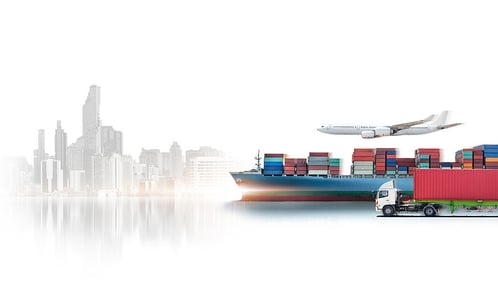As we approach the holiday season, the supply chain disruptions that have plagued most of the world for the better part of two years have gone from industry news to front-page news. And everybody has the same question: how are we going to get the supply chain back on track? From what we know and see as a third-party logistics provider, the solutions won’t happen overnight, but they may be far-reaching enough to prevent a crisis like this from happening again in the future.
4 steps to overcoming supply chain disruptions
1. Create additional warehousing space. While much of the current news about supply chain disruptions is centered on the ports and drayage drivers, it’s the warehousing issue further down the supply chain that deserves more attention.
Simply put, warehouses within dray distance of major US ports are full. And not only are the warehouses full, the warehouse container lots are full as well. This means that there is little-to-no room in the warehouse to offload product, and no room on the lot to receive new containers. So, even if the ports and drivers are able to get containers off port, there’s ultimately nowhere to put them further down the supply chain.
New warehouse space is thus sorely needed, especially as eCommerce booms and companies are holding on to more inventory in the wake of the pandemic. And, with port-adjacent vacancy rates at record lows, the only answer is to create new space. Yes, this takes time, and many regions already have millions of square feet of space in development. But if municipalities can cut the bureaucratic red tape to shorten the construction cycle, even more new space can be developed relatively quickly.
Solution time: 18+ months
2. Address the US driver shortage. Without drivers, nothing can move off the port.
An issue long before the pandemic, the US driver shortage is being felt more acutely now as manufacturing and consumer demand spikes.
The bottom line is that the US needs more drivers – especially drayage drivers at the ports. How do we get there? The following are a range of possible solutions with differing degrees of popularity.
- Lower the age for interstate commercial driver licenses from 21 to 18
- Incentivize truck driver schools so that new drivers can be trained without going thousands of dollars into debt
- Work with the insurance industry so that drivers with less than one year of experience can receive adequate coverage without their trucking companies paying substantially higher rates
- Allow companies to bring in foreign drivers for drayage work (this is already happening to an extent, but companies must sign a multi-year sponsorship in order to bring in drivers and most companies are not willing or able to do that)
- Expedite FBI background checks for TWIC identification (needed for drivers to enter ports; currently takes about 3 months)
Solution time: varies, though some of these solutions can happen quickly
3. Secure more port chassis within the US. A critical but often-overlooked component of current supply chain disruptions is the chassis shortage. For containers to get off port and to the warehouse, they need to travel on chassis. The problem is: there just aren’t enough chassis to support all the incoming containers.
There are several causes of this shortage. The first is that many chassis are stuck sitting idle in warehouse lots holding containers waiting to be unloaded. The second is that a drayage carrier may have a chassis and a truck – but no driver, which leads to further delay. In both scenarios, chassis are off port for a longer period of time (typically 8 or more days compared to the usual 5), which leaves fewer chassis to handle the surplus of incoming containers.
The main solutions to this problem are:
- The import duties and tariffs that are causing Chinese-made machinery to be priced three-times higher than it was previously can be lowered.
- American manufacturers can be incentivized to build port chassis instead of the more profitable trailer chassis.
Solution time: 6 to 9 months
4. Improve port automation and training. There is currently a lot of talk about expanding the footprints of US ports and using offsite yards where drivers can pick up and offload containers. These things can indeed help the situation in the short-term, but they wouldn’t be necessary if the ports ran more efficiently.
Automation is one way to improve this efficiency. At automated port terminals, machines such as automated cranes and rail cars are used to load and offload ships – performing these tasks much quicker than human labor. There are currently three automated terminals at the Ports of Los Angeles and Long Beach, with the development of a fourth being contested between the ports and local labor unions.
Another way to improve efficiency at the ports is to train crane operators and other workers for additional port shifts. Due to safety concerns, it is much more practical to have more workers trained on these key skills (especially at ports now operating around the clock), than it is to have fewer workers working longer hours.
Solution time: 5 months for additional training, 18+ months to develop automated terminals
Progress continues in overcoming supply chain disruptions
The good news is that these and other solutions can boost supply chain efficiency, ease current disruptions, and prevent future disruptions. The bad news is that none of these solutions can happen overnight.
The current presidential administration has shown a willingness to get involved and only time will tell how effective those interventions will be. In the meantime, it’s time to hunker down and move your own supply chain forward as best you can. If you’re looking for a logistics expert to help you navigate and mitigate supply chain challenges now and in the future, contact Weber Logistics.





 Capital Management
Capital Management